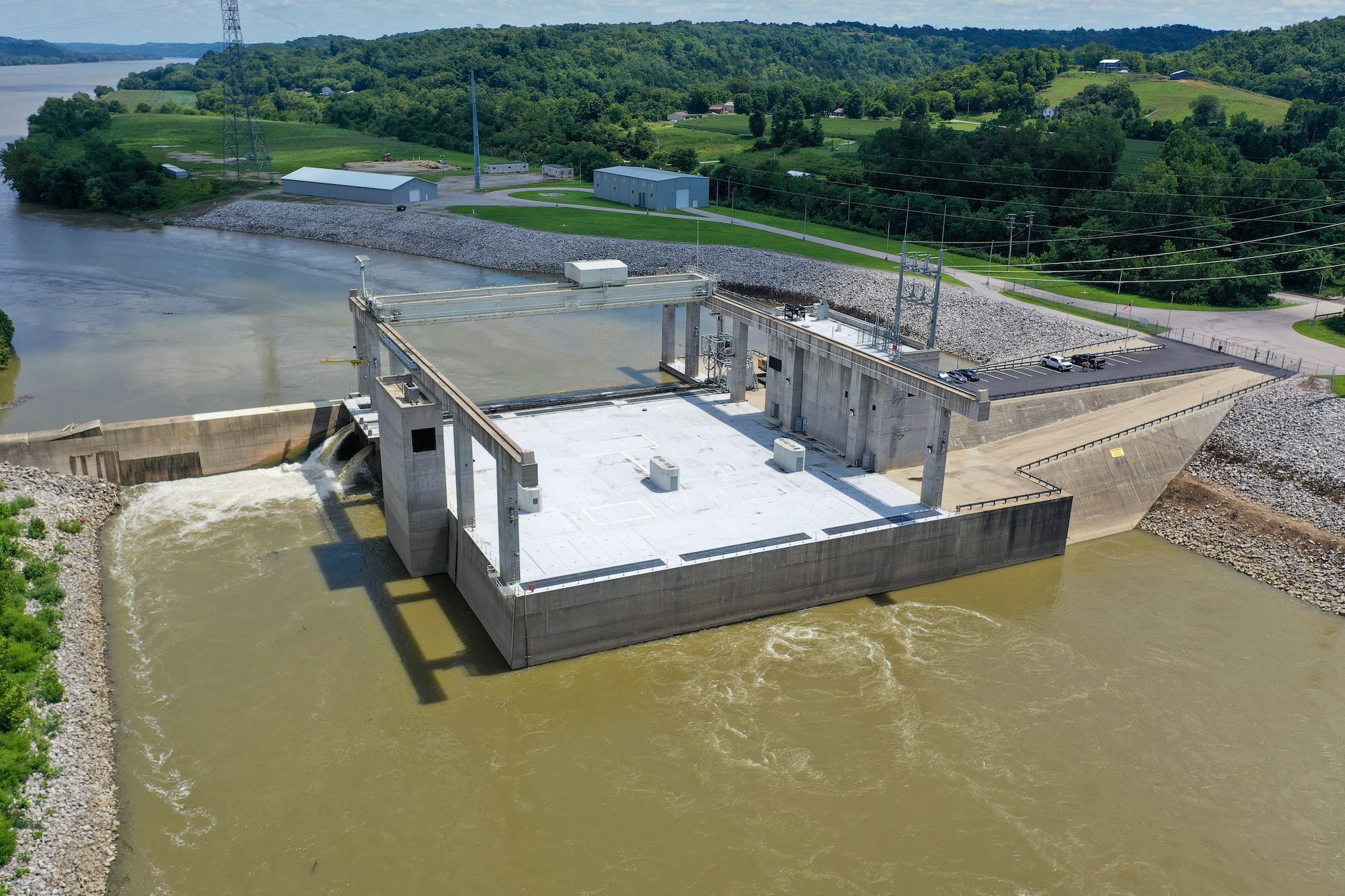Meldahl Hydroelectric Project
The Meldahl Hydroelectric Plant, operated by the City of Hamilton, is a 105-megawatt (MW) run-of-the-river hydroelectric power plant providing renewable* generation to the region.


Meldahl Hydroelectric Plant
The Meldahl plant is located on the Kentucky shore of the Captain Anthony Meldahl Locks and Dam. The facility, located on the Ohio River near Foster, Kentucky, about an hour southeast of Cincinnati, is the largest hydroelectric power plant on the Ohio River.
The Meldahl Hydroelectric Plant diverts water from the existing U.S. Army Corps of Engineers’ Dam through bulb turbines that generate an average annual output of approximately 558 million kilowatt-hours (kWh). The site includes an intake approach channel, a reinforced concrete powerhouse and a tailrace channel. The powerhouse contains three horizontal bulb-type turbines and generating units with a total rated capacity of 105 MW.
Meldahl by the Numbers
Participation
American Municipal Power, Inc. (AMP) owns the Meldahl Hydroelectric Plant through a separate wholly owned limited liability company. AMP developed the project with the Member community of Hamilton, Ohio, which originally procured the development license from the Federal Energy Regulatory Commission. The City of Hamilton operates the Meldahl plant and holds the rights for an approximate 51 percent share of the energy output from the facility, with AMP taking the remaining output for the 47 other AMP Members from Kentucky, Michigan, Ohio and Virginia that participate in the project.
Construction
Excavation and cofferdam construction began in 2010, and powerhouse construction began in August 2011. The plant reached full commercial operation in April 2016.
*Note that AMP, on behalf of its Members, sells all or a portion of the renewable energy certificates created by its renewable energy projects, power purchase agreements and joint ventures to help reduce its wholesale power costs.